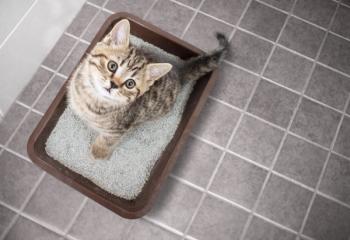
From the lens of a veterinarian: My day with Mr Uil
Veterinarian and wildlife photographer describes spending the day with a longtime Dayak and what he taught him about the animals and land of the Borneo rainforest
Mr Uil is the Dayak guide at Camp Leakey with the most experience. His marriage to Charlotte Grimm, an American woman who volunteered at Camp Leakey several years earlier during her first visit to Borneo, added to his status. Uil’s job was to oversee the younger Dayaks as they took us to their assigned areas in the rainforest to look for wild orangutans.
Uil and I bonded instantly upon meeting as we talked about the rainforest around Camp Leakey. A veterinary degree is highly respected in this part of the world, and mine laid the groundwork for my special day with him.
I scored one morning when he pulled me away from the group on our way out and told me that the 2 of us would be spending the day together alone. Spending time with him was the highlight of my trip. His knowledge of the flora and fauna of the rainforest—the place of his birth—was impressive. I am in awe of a person who is so in touch with nature.
The Borneo rainforest has intrinsic dangers that only an experienced Dayak would have awareness of. With all the unique wild animals like bearded pigs, barking deer, malarial mosquitoes, poisonous plants, and venomous snakes, safety is obviously a concern. Even though the bearded pigs and venomous snakes are highly dangerous, it is uncommon to encounter one of them, fortunately.
It is the
Of all these wild and potentially dangerous saps, animals, and plants, can you venture a guess as to the greatest danger in the Borneo rainforest? It is falling tree branches from rotting wood in the abundant trees that proliferate. Luckily, the closest we got to that was the sound of one of these branches crashing to the ground, deep in the rainforest, that caught our attention on one of our treks.
Uil and I walked further into the rainforest as we explored Tanjung Puting National Park. My attire for my day with Mr Uil was my weightlifting gloves and a long-sleeved t-shirt. The long sleeves prevented tree sap exposure, scratches, and insect bites. The gloves allowed me to grab onto spiny branches for added balance in the thick undergrowth.
Mr Uil did 2 fascinating things on our special day together. One was to pull a leaf off a tree, put it in his mouth, and blow through it. This produced a high-pitched sound as the leaf reverberated. He was calling in a barking deer (Muntiacus muntjac), and sure enough, it showed up soon after. This deer literally barks when frightened by a predator. After learning about that toxic sap on leaves, I passed on the opportunity to learn this deer-calling technique, thank you.
Another fascinating skill I learned was to build a homemade trap that could catch almost any animal for us to eat in case we got stuck or lost. First, Uil used a large knife to cut small branches for the frame, then one branch for a pointed stick. Then, he shaved some smaller branches for his version of a cord. It was ingenious, although I had no idea if it would provide us dinner (I was glad we had our cooked rice with us).
In addition to sharing my photos in articles, presentations, and on my website, another reason I take photos on my trips around the world is to relive the experience years later. Writing this article and seeing these pictures from over 30 years ago, allowed me to do this.
In the next few articles, I will go over my trip to Borneo 21 years after
Newsletter
From exam room tips to practice management insights, get trusted veterinary news delivered straight to your inbox—subscribe to dvm360.






